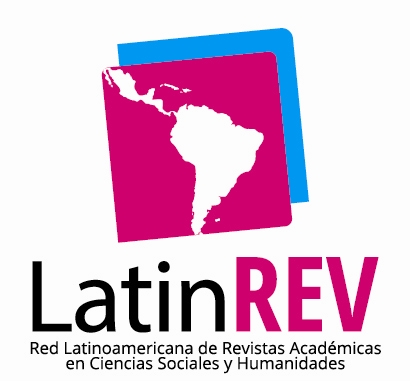En busca de un modelo educativo y de lectura coherente con las necesidades educativas especiales de los estudiantes sordos
Resumen
La discusión acerca de la educación de los sordos en Chile fue por décadas una cuestión exclusivamente lingüística, donde el problema sobre la modalidad comunicativa (oral versus signada) dejó de lado el problema del aprendizaje. En la actualidad, los escasos logros académicos de los estudiantes sordos han vuelto la mirada al campo de los aprendizajes. En este sentido, la enseñanza de la lectoescritura se ha relevado como principal foco de atención. Sin embargo, abordar este problema conlleva revisar concepciones teóricas que impliquen determinadas opciones educativas. Este artículo pretende examinar y proponer modelos de lectura coherentes con una opción lingüística, social y pedagógica de la educación de los sordos hoy.
Palabras clave: Bilingüismo, lectura, sordera, lengua de signos.
Descargas
Referencias
in working memory and reading skills in deaf subjects using Chilean Sign Languages”. American Annals of the Deaf, 152 (5), pp. 467- 479.
CUMMINS, J. (1984). Bilinguism and Special Education: Issues in assessment and pedagogy. San Diego. College-Hill Press.
CUMMINS, J. (1989). A theoretical framework for bilingual special education. Exceptional Children, 56 (2), 111- 119.
CUMMINS, J. (2001). ¿Qué sabemos de la educación bilingüe? Perspectivas psicolingüistas y sociológicas. Revista de Educación, 326, 37-61.
CHAMBERLAIN, CH., & MAYBERRY, R. (Eds.) (2000). Theorizing about the relation between American sign language and reading. En C. Chamberlain, J. P. Morford & R. Mayberry (Eds.). Acquisition of Language by Eyes. London. LEA.
DALLER, H. (2001). El desarrollo del bilingüismo: Aspectos educacionales. Revista de Educación, 326, 25-35.
DEMARTINI, G. & LETELIER K. (2006). Historia de la comunidad sorda: elaboración de un texto escrito para niños y jóvenes Sordos en edad escolar. Memoria de título no publicada. Santiago: Universidad Metropolitana de Ciencias de la Educación.
DOMÍNGUEZ, A. & ALONSO, P. (2004). La educación de los alumnos sordos hoy. Perspectivas y respuestas educativas. Málaga. Aljibe.
ELORZA, I. (2000). Iniciación al aprendizaje de la lectoescritura en contextos plurilingües. World Associaton of Early Childhood Educators: World Conference on Reading & Writing. Valencia.
HERRERA, V. (2003). Desarrollo de habilidades lectoras en sujetos sordos signantes, a partir del uso de códigos dactílicos. Tesis doctoral no publicada. Universidad Complutense de Madrid.
HERRERA, V. (2008). “Desafíos pendientes en la enseñanza de la lectoescritura en estudiantes sordos”. Boletín de Investigación Educacional, Vol. 23.Nº 2. pp. 69-80.
HIRSH-PASEK, K. (1987). The metalinguistic of fingerspelling: An alternate way to increase reading vocabulary in congenitally deaf readers. Reading research Quarterly, XXII (4), 455-473.
HOFFMEISTER, R. J. (2000). A piece of the puzzle and reading comprehension in deaf children. En C. Chamberlain, J. P. Morford & R. Mayberry (Eds.) Acquisition of Language by Eyes. London. LEA.
HOOVER, W. A., & GOUGH, P. B. (1990). The simple view of reading. Reading and Writing: An Interdisciplinary Journal 2, 127-160.
MAYBERRY, R. (1995). Mental phonology and language comprehension or what does that sign mistake mean? En K.Emmorey & J. Reilly (Eds.), Language, Gesture and Space. New York. LEA.
MAYBERRY, R., & FISCHER, S. (1989). Looking through phonological shape to lexical meaning: The bottleneck of no-native sign language processing. Memory & Cognition, 17 (6), 740-754.
MAYBERRY, R. (1994). The importance of childhood to language acquisition: evidence from American Sign Language. En J.C. Goodman & H. C. Nusbaum (Eds.). The Development of Speech Perception. Cambridge. MIT Press.
MAYER, C., & WEELLS, G. (1996). Can the linguistic interdependence theory support a bilingual-bicultural model of literacy education for deaf students? Journal of Deaf Studies and Deaf Education, 1, 93-107.
MOORES, D. F. (1997). Psycholinguistics and deafness. American Annals of the Deaf, 142 (3), 80 – 89.
MUÑOZ, C. (2000). Bilingualism and trilingualism in school students in Catatonia.
En J. Cenoz y U. Jessner (eds.) English in Europe. The acquisition of third Language. Clevedon. Multilingual Matters.
PADDEN, C. (2006) Learning to fingerspell twice: young signing childre’s acquisition of fingerspelling. En B. Schick, M. Marharck & P.E. Spencer (eds.), Advances in the sign language development of deaf children. New York: Oxford University Press.
PADDEN, C., & RAMSEY, C. (1998). Reading ability in signing deaf children. Topics in Language Disorders, 18 (4), 30-46.
PADDEN, C., & RAMSEY, C. (2000). American Sign Language and reading ability in deaf children. En C. Chamberlain, J. P. Morford & R. Mayberry (Eds.), Acquisition of Language by Eyes. London. LEA.
PRINZ, P., & STRONG, M. (1998). ASL proficiency and English literacy within a bilingual deaf education model of instruction. Topics in Language Disorders, 18 (4), 47 -60.
PETITTO, L. A., KATERELOS, M., LEVY, B. G., GAUNA, K., TÉTREAULT, K., & FERRANO, V. (2001). Bilingual signed and spoken language acquisition from birth: implications for the mechanisms underlying early bilingual language acquisition. Journal Child Language, 28, 453-496.
STRONG, M., & DEMATEO, A. (1990). The effects on metalinguistic awareness of an experimental bilingual program for deaf children. Linguistics and Education, 2, 345-364.
STRONG, M., & PRINZ, P. (2000). Is American Sign language skill related to English literacy? En C. Chamberlain, J. P. Morford & R. Mayberry (Eds.), Acquisition of Language by Eyes. London. LEA.
Descargas
Publicado
Número
Sección
Licencia
Política de acceso abierto
Esta revista proporciona un acceso abierto inmediato a su contenido, basado en el principio de que ofrecer al público un acceso libre a las investigaciones ayuda a un mayor intercambio global de conocimiento.
Licencia
Revista REXE "Revista de Estudios y Experiencias en Educación" de la Facultad de Educación, Universidad Católica de la Santísima Concepción, está distribuido bajo una Licencia Creative Commons Atribución 4.0 Internacional.






